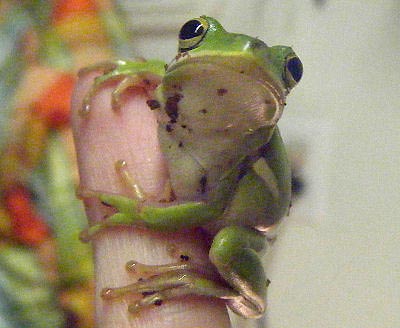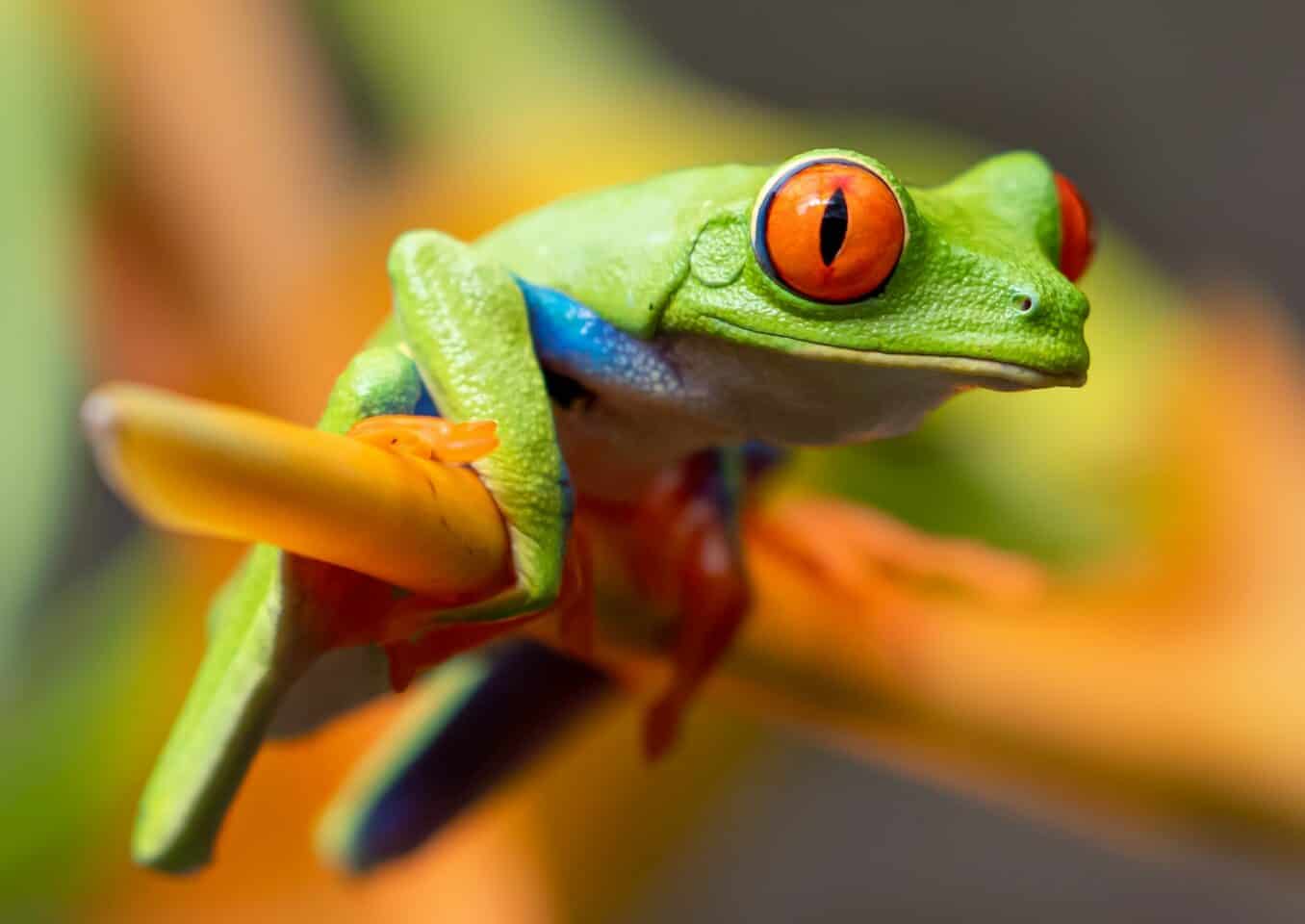
Amphibians are a wonderful group of animals comprised of frogs, toads, salamanders and newts!
Frogs, toads, salamanders and their relatives are deftly described as living jewels in a home terrarium. They come in a wide variety of shapes and colors and have some very diverse habitats. But their intriguing appearances and behaviors make them truly a joy to observe and care for. Some can be very difficult or impossible to keep, but fortunately for hobbyists there are also many species to choose from that are relatively easy.
Keeping amphibians is a fascinating hobby and has many advantages over other types of pets. They are typically kept in a terrarium or vivarium. Their habitats generally require very little space and can make an attractive showpiece. Like a work of art it makes an aesthetically pleasing attraction, but has the extra benefit of keeping a beautiful, exotic animal.
These enclosures create a semi-natural environment to imitate the natural habitat of the animal. For some species the container will have just a land area, for others just a water area, but for some it will have both. A terrarium with plants, mosses, driftwood, rocks, or even water brings a touch of nature into the home.
These animals are generally quiet, clean, odorless, and non-demanding. Once the terrarium is setup, the cleaning and maintenance chores are minimal. However it is very important to have a detailed knowledge about the habitat of each species, and how to reproduce it, before attempting to keep it in a home terrarium.
The Amphibian species list below includes popular types as well lesser known varieties. Each Amphibian guide has a description of the species, its place of origin, habitats and behaviors, as well as its care to successful maintain them in a home terrarium. Amphibian pictures are also provided within each guide to help with identification, and to aid in choosing the best type pet for you.
For information on Amphibians, see:
Keeping Reptiles and Amphibians as Pets
Amphibian Characteristics
Just what are amphibians? Amphibians are characterized as ectothermic tetropods with non-terrestrially adapted eggs. Being ectothermic means they are cold-blooded and cant regulate their body temperature. As tetropods they are vertebrates (animals with a backbone), and generally have four limbs.
Like fish, most start their life cycle as water-breathing juveniles with gills. Then they go through a metamorphosis, moving to an air breathing form as adults. However there are some that will retain the juvenile gills into adulthood and remain in this state for their entire lives. The skin of amphibians is permeable and allows gases and other molecules to pass through. Unlike fish however, amphibians dont have scales.
Amphibian History
Frogs, toads and salamanders have been creeping along on the earth for millions of years. They existed before humans evolved. They comprise a relatively small group of vertebrates with over just 6500 described species.
These animals are often bundled with reptiles in the study of Herpetology, a branch of Zoology. Amphibians and reptiles are collectively known as herps, herptiles, or herpetofauna. The term herpetology is derived from the Greek word herpton, meaning a creeping thing.
Amphibians belong in the class Amphibia, which includes frogs and toads of the order Anura, newts and salamanders of the order Caudata, and the lesser-known limbless caecilians of the order Gymnophiona. This last order superficially resembles earthworms or snakes and they mostly live hidden in the ground.
It is estimated to be about 350 million years ago that the first fishes came out of the water onto the land. An elongated carnivorous fish, the Eusthenopteron, is thought to be a direct line to the early amphibians.
Early amphibians, Ichthyostega and others, were able to breathe air and had legs. Lungs had been inherited from the crossopterygian ancestors. It is unlikely that Ichthyostega spent much time away from water. During their larval stage, ichthyostegids continue to respire by means of gills, and this is true of most living amphibians today. Many of the amphibians of today metamorphosis into air breathing adults, but some species still retain their gills throughout their lives.
Amphibian Facts
Much is being discovered about these unique creatures and how to keep them. In more recent times the number of both professional and amateur herpetologists has greatly increased. This has been helped by improvements in communications along with a growing interest in wildlife that’s been impassioned by the influx of nature films and documentaries.
In modern times the largest decline of species in the animal world has been the amphibians. All around the globe there has been a dramatic decline in amphibian populations. Some populations of amphibians have decreased in numbers by as much as 50% up to 100%. Many species in Europe, North America, and other industrialized areas are now threatened or extinct. A number of factors that have led to their decline. These include habitat destruction, pollution, collection and trade, and the introduction of invasive species.
The realization that amphibians are largely non-adaptive has lead to great success in keeping and breeding these animals. They must be kept in an environment that closely mimics their natural environment. This includes decor, temperature, heating and lighting, and also seasonal changes.
Featured Image Credit: Stephanie LeBlanc, Unsplash




